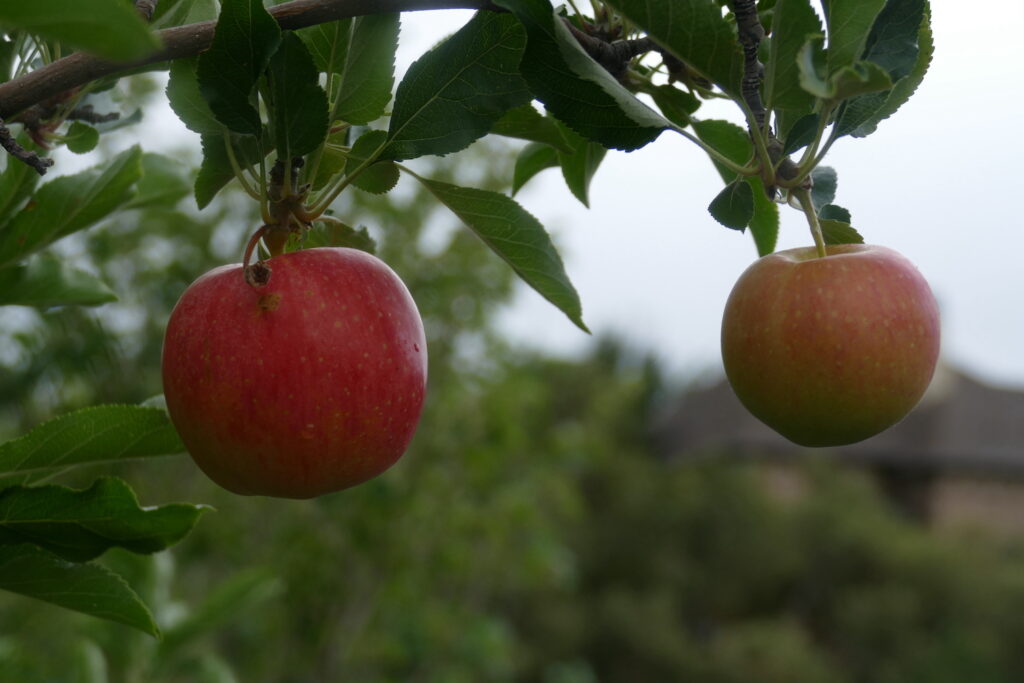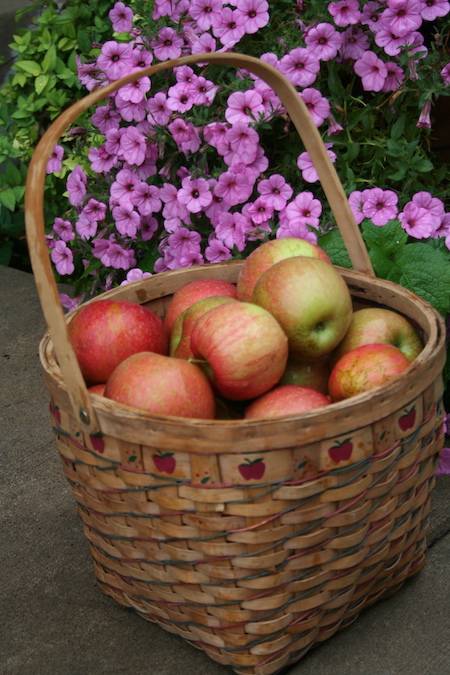Which Heritage Apples are Still Available?
Recently, our community outreach manager Courtney Tchida visited the Gibbs Farm, a wonderful historic site run by the Ramsey County Historical Society. There, she had a chance to taste one of Minnesota’s most important heritage apples—the Wealthy apple. The hort society really got its start because of apples and one of the most significant (and difficult!) early members of the hort society was Peter Gideon, who bred the Wealthy apple, the first reliable and commercially successful apple for northern gardeners.
 That got us wondering—which other Minnesota heritage apples are still available for home gardeners to grow? Depending on where you draw the line about what “heritage” means, there are several that we like that you can still find in nurseries for growing or in apple orchards for eating.
That got us wondering—which other Minnesota heritage apples are still available for home gardeners to grow? Depending on where you draw the line about what “heritage” means, there are several that we like that you can still find in nurseries for growing or in apple orchards for eating.
Wealthy, which was introduced in 1868, is available as bare-root trees from a variety of local growers and national online retailers. The tree is semi-dwarf, making it a good option for smaller yards and urban landscapes. It tops out at 15 feet tall and wide and produces fruit in three to five years. It’s an early apple with lovely white blossoms in spring. It will sucker, so be prepared. The fruit is incredibly juicy and makes delicious pies and crisps.

Haralson is a one of the most readily available heritage apples. It was introduced in 1923 and one of its parents is Wealthy. It was named for Charles Haralson, who was superintendent of the University of Minnesota Fruit Breeding Farm in the 1920s. Easy to grow, Haralson trees tend to produce abundant crops every other year. The apple is tart and many home cooks love it for apple crisps and sauce, but they are delicious fresh as well or try it in our apple chutney recipe. This is a semi-dwarf tree and benefits from pruning. Haralson is also USDA Zone 3 hardy, so it’s a great option for northern Minnesota fruit lovers.
Beacon apple is a 1936 introduction from the U of M and is a bit harder to find, though many apple orchards in Minnesota grow it. This is another Wealthy cross, and it produces a bright red, mid-season fruit. The tree is susceptible to fire blight.
Chestnut and Centennial crabapples are two crabapple varieties that are right on the line genetically between a crabapple and an apple. (The two are in the same genus—Malus.) Chestnut (introduced in 1949) is a very flavorful apple that ripens in early to mid-September. It will keep for a few weeks in storage. Centennial (1957) has an oblong shape and beautiful orange color but does not store well. Both trees can grow more than 20 feet tall and have lovely spring bloom.
Of course, there are many newer apple varieties that grow beautifully in Minnesota, but we like the heritage apples, too. What are your favorite apple trees to grow?

Had many apple trees on the farm I grew up on planted by my grandmothers family and she called them “Malinda”. Ripening in October, best tasting after a light frost. It was yellow, rusty colored blush on sun side, super crisp, little dots of sweetness in the flesh and stored well into the spring. Any ideas if it’s an actual apple? Never used any sprays or fertilizer and almost everyone was perfect.
Yes! Malinda was a very popular apple in the early 20th century. In fact, both Beacon and Haralson have Malinda as a parent. It’s very difficult to find these days. Here’s a great article about Malinda from another Minnesota website: http://minnesotaharvest.net/apple-varieties/malinda-mother-of-minnesota-apples/
I am looking for somewhere I can find duchy apples. I think it was an early apple. When I was growing up we had a tree in our orchard
Good question, Barb. We recommend scanning our list of partner nurseries – the list is extensive and includes contact info: https://northerngardener.org/membership/discount-partners. If you don’t have any luck there, you could also reach out to the U of MN since they are so experienced in the apple world: https://mnhardy.umn.edu/apples/varieties (see the Ask a Master Gardener button in the righthand column – you can easily submit a question there). Hope this helps!